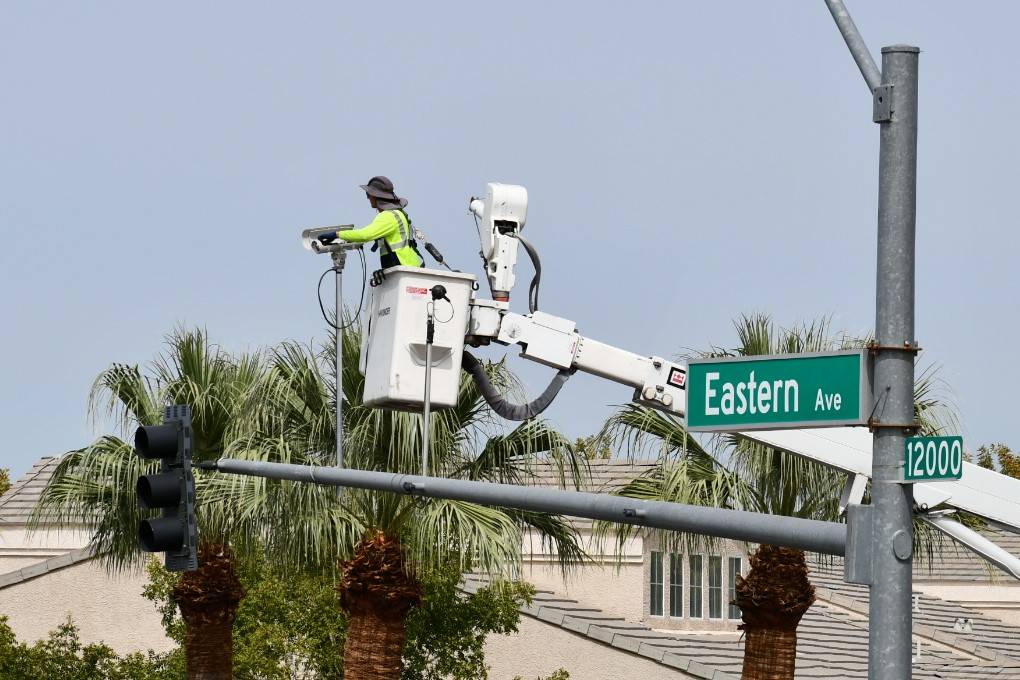RTC testing adaptive traffic signals on stretch of Eastern

One of the questions most frequently asked of the Road Warrior involves traffic signals and perceived timing issues.
From all around the valley, readers chime in about long waits and missed cycles at traffic signals.
The Regional Transportation Commission of Southern Nevada, which oversees 1,577 traffic signals, gets its fair share of complaints as well, receiving 160 traffic signal complaints in 2020.
Looking to improve traffic signal timing, the RTC partnered with Henderson and Clark County on a pilot program on Eastern Avenue in Henderson, running from Beckler Drive (near Sunridge Heights Parkway) to Pebble Road. The stretch features a mix of residential and commercial properties, making it an ideal corridor to conduct the pilot on, according to the RTC.
The 3.6-mile stretch of road includes 14 intersections equipped with smart adaptive traffic signals that should react to traffic conditions in real time, including special events, road work or crashes that disrupt the traditional traffic flow in an area.
The system includes sensors to collect data, which is fed into a controller to evaluate and develop signal timing improvements and modifications. Then the adaptive signal technology implements the signal timing updates. The process is updated on a continual basis to ensure signal timing is responding to real-time conditions on the road.
Traditional signals require manual traffic counts and periodic timing adjustments, which do not reflect real-time traffic conditions.
With the smart traffic signals, motorists may notice a difference with the order of green phases at an intersection. Instead of waiting for an entire traffic signal cycle to play out while a driver is sitting at a red light, the adaptive signals will identify instances where a green signal occurs sooner than expected.
The project is costing the RTC $900,000, funded by the motor vehicle fuel tax it receives from a 9-cent tax on every gallon of gas purchased in Clark County. In fiscal year 2020, the gas tax generated $74.9 million for the RTC to use to fund various projects.
The aim of the advanced signals is to reduce traffic delays and congestion, improve travel time, decrease vehicle emission by reducing idling time and improve safety.
“Roadways are limited in their capacity, but technology can be the new asphalt and help increase capacity for additional vehicles,” MJ Maynard, RTC CEO, said in a statement. “We appreciate the collaboration with City of Henderson and Clark County on this project along a continually busy corridor that sees thousands of vehicles per day.”
The pilot project began in October and runs through March. Those who travel on the stretch of Eastern are encouraged to share their experience by filling out a survey on the project’s website.
John Penuelas, RTC senior director of engineering, said once the project is complete, the agency will review the results and determine what elements did and did not work as planned.
“We will discuss if this technology could help improve travel time, trip reliability and safety in other corridors in the valley, and if so, which ones,” Penuelas said. “This pilot will also provide criteria recommendations for selecting corridors suited for adaptive signal technology.”
Contact Mick Akers at makers@reviewjournal.com or 702-387-2920. Follow @mickakers on Twitter. Send questions and comments to roadwarrior@reviewjournal.com.